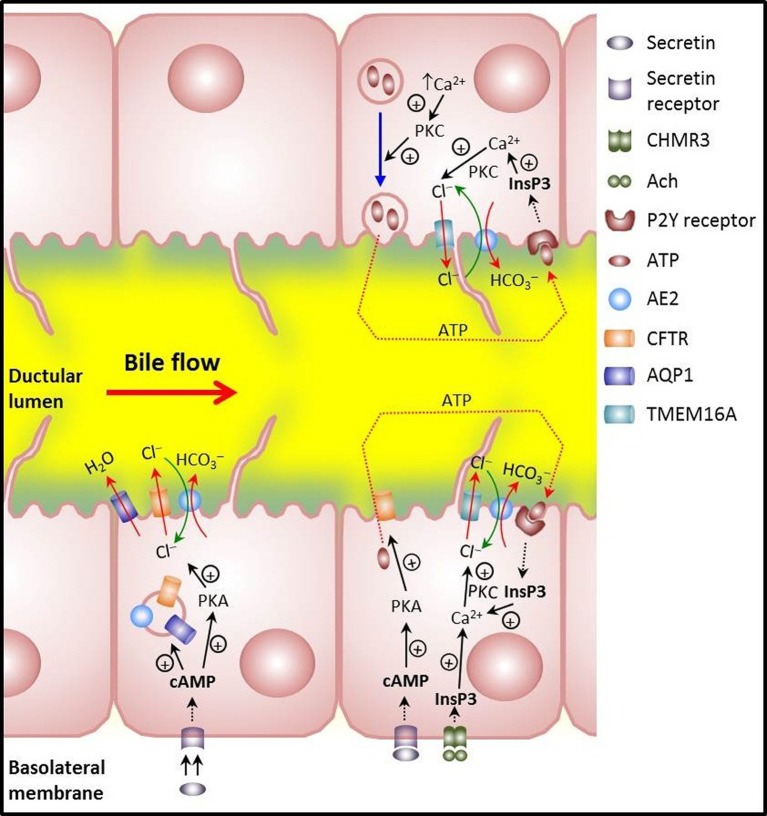Figure 2.
Main mechanisms involved in biliary HCO−3 secretion in cholangiocytes. Lower left: illustrates that the hormone secretin induces trafficking of vesicles with the chloride channel CFTR, the anion exchanger AE2/SLC4A2, and the water channel AQP1. Vesicle exocytosis at the apical membrane allows for bicarbonate-rich hydrocholeresis. Lower right: cholinergic stimulation of basolateral M3 muscarinic receptors increases InsP3 and leads to Ca2+ release. Activation of the apical Ca2+-dependent Cl− channel TMEM16A results in efflux of Cl− which is then exchanged with HCO−3 via AE2. Moreover, CFTR activation that follows secretin stimulation may induce apical release of ATP with further stimulation of apical P2Y receptors, increases in InsP3 and Ca2+, activation of apical Ca2+-dependent Cl− channel TMEM16A, Cl− efflux and final AE2-mediated Cl−/HCO−3 exchanger for apical HCO−3 secretion. Upper right: release of ATP that follows PKC-dependent exocytosis of ATP-enriched intracellular vesicles upon increases in cell volume. Further stimulation of apical P2Y receptors may end up with apical HCO−3 secretion as described for the CFTR-dependent release of ATP.

